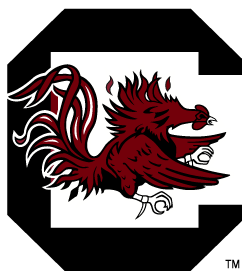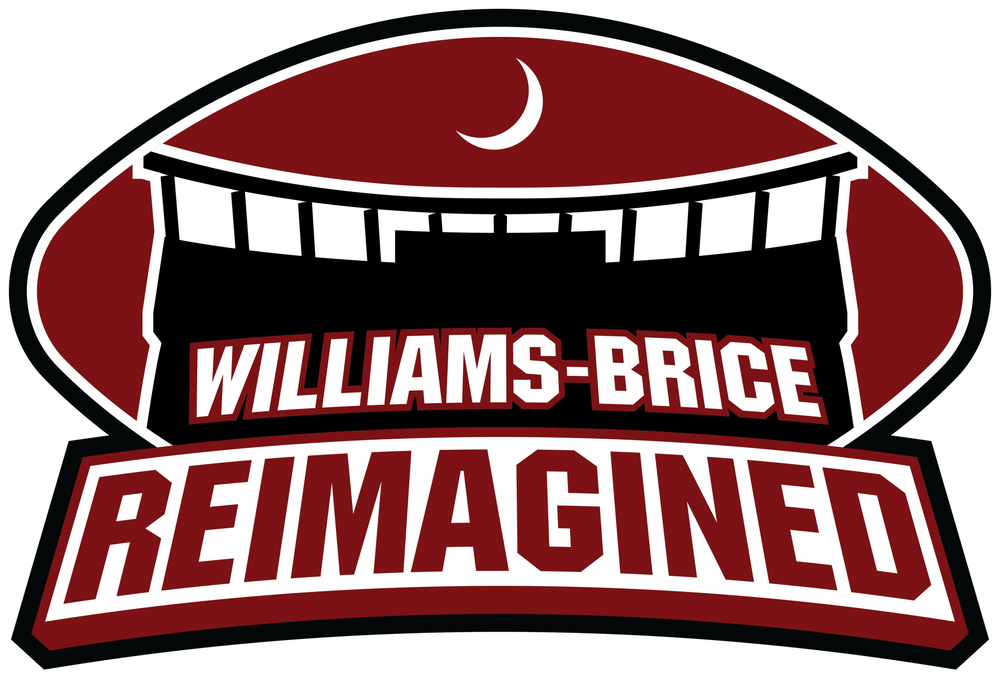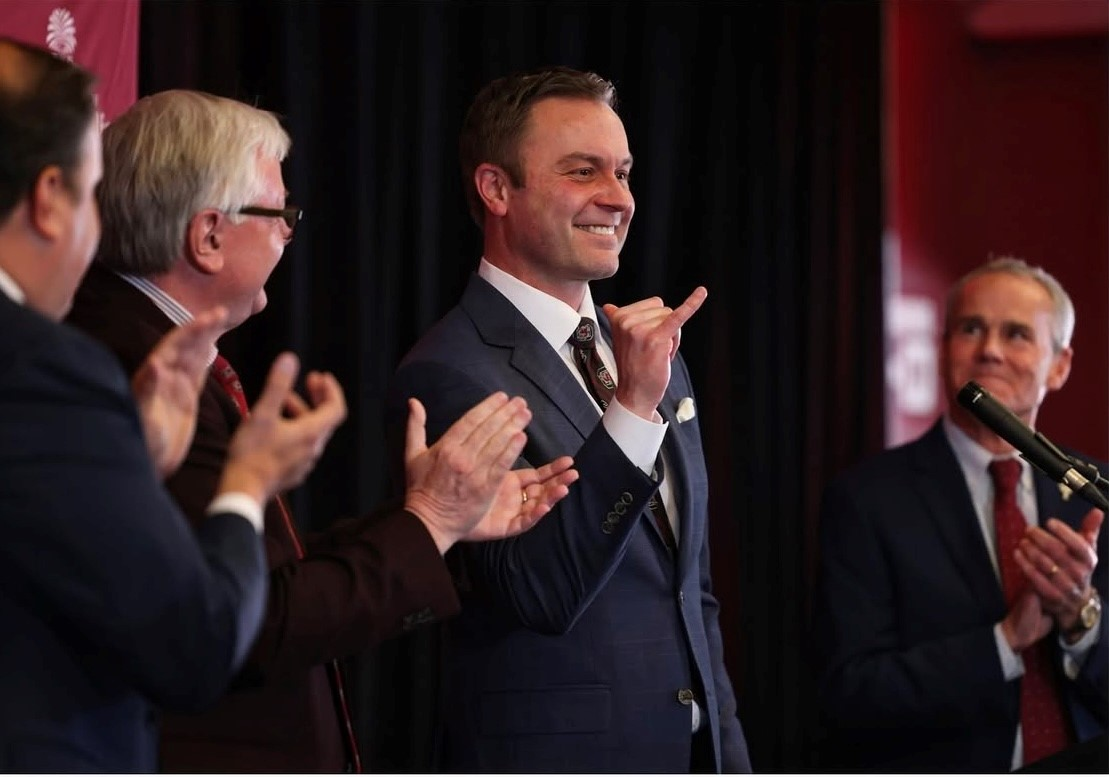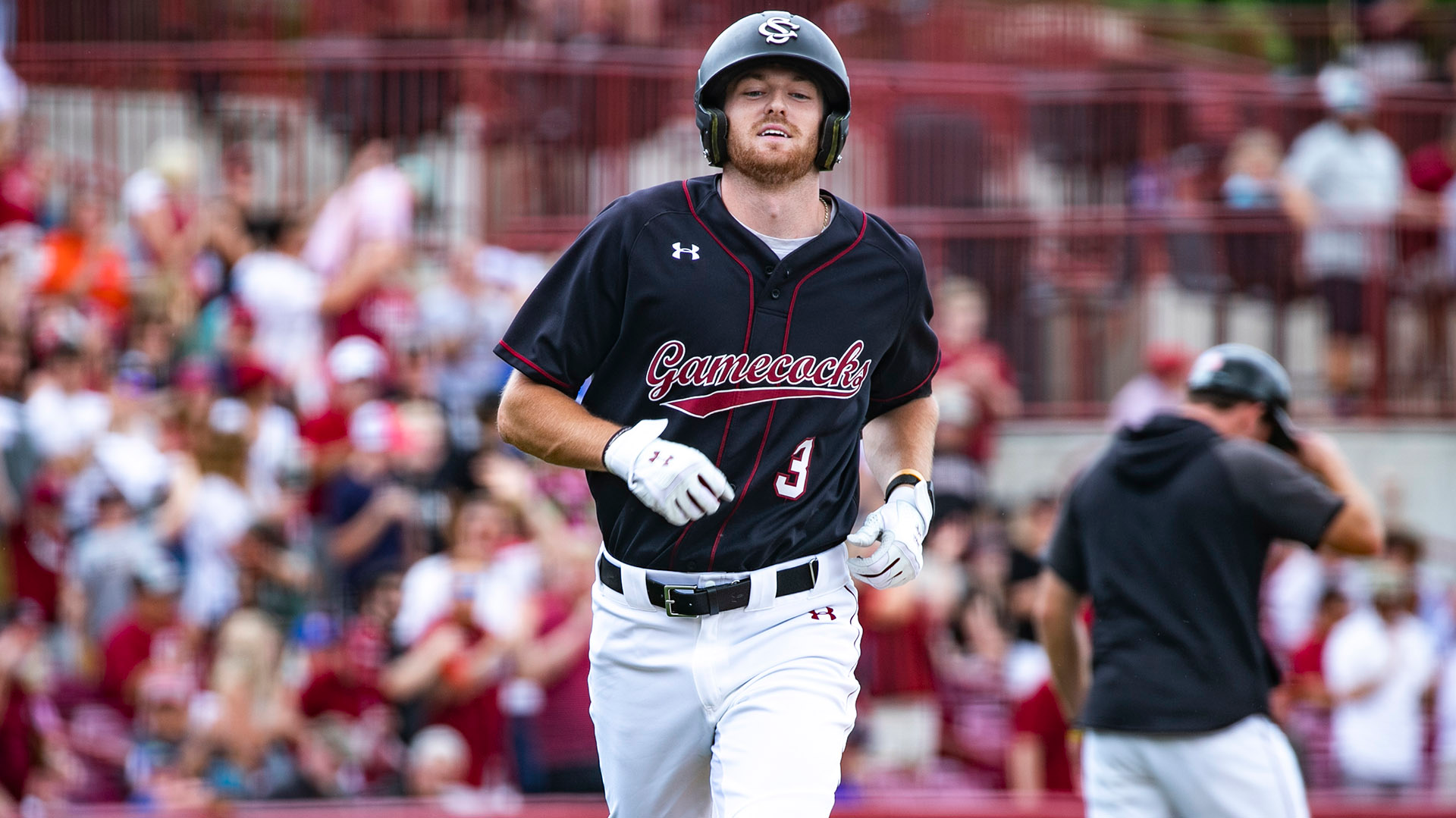
Massive Privately Funded Gamecock Sculpture Ready for Williams-Brice Stadium
The Springs Brooks Plaza outside Williams-Brice Stadium will have a new centerpiece with the delivery of the much-anticipated Gamecock sculpture on Thursday, September 10. No Athletics Department funds were used for the project as the one million-dollar bronze sculpture was privately funded and was made possible through the generosity of alumni donors, David (’84) and Lynette Seaton, and Bill Horton (’73) and his wife, Mary Major (’75).
“We needed something iconic,” said David Seaton, who is retired after serving as the Chairman and CEO of the Fluor Corporation and currently lives in Dallas. “I had a smaller one done by an artist in New Mexico and it’s inside Colonial Life Arena. I figured we needed something at Williams-Brice, and we needed something iconic. I think it’s going to outdo my expectations. I’ve seen the progress pictures, and every time I saw them, I got excited. It’s incredible.”

“We have close ties to the University,” said Horton, who is a retired executive from Blue Cross/Blue Shield and lives in the Isle of Palms. “We’re both graduates from there. We have a long history of being linked to the University. We wanted to do something to honor Mary’s parents, Bob and Madge Major, who are deceased, but were longtime Gamecock fans and season ticket holders for 50-plus years. We really made this contribution in their names. We thought it would be a wonderful capstone to all the work that has been done around the stadium with the Springs Brooks Plaza, Gamecock Park, the new practice facility and of course the new renovations to the stadium. We really thought this would top things off.”
“We are very appreciative of David and Lynette Seaton and Bill Horton and Mary Major, whose donations paid for this statue,” said South Carolina Athletics Director Ray Tanner. “We have all been patiently waiting for it to arrive here. Its large size and intricate details make this statue unique. It will be worth the wait to have this magnificent statue in front of Williams-Brice Stadium.”
The Gamecock sculpture will be placed near the corner of Bluff Road and George Rogers Boulevard. Work will begin Thursday and take nearly two weeks to complete assembly and final surface finishing. Standing approximately 20 feet tall and 20 feet wide, the impressive structure adds to the many focal points that have been incorporated into the plaza in recent years and is expected to be ready for unveiling prior to kickoff of the 2020 season on September 26 when South Carolina hosts Tennessee.
“When the plaza was designed, there was a location designated to receive a monumental structure, and that’s the best way to describe this work. It is monumental,” said University Architect Derek Gruner, who was the chairperson of the committee that selected sculptor Jon Hair for the project. “We intentionally wanted an iconic sculpture that would not be dwarfed by the stadium.”
“The body section is around 10,000 to 11,000 pounds,” said project manager Ann Derrick from University Facilities Planning, Design and Construction. “The tail section is no more than 6,000 pounds and the head is 2,500 to 3,000 pounds.”
While a lot of time and effort went into making the project happen, there is still a lot of work to be done to put the nearly 10-ton Gamecock in place after it arrives on a flatbed truck from San Diego. It is estimated that it will take just under two weeks to finish the sculpture, which will include a large base.
“We had to install some structural components to tie the concrete base down about 20 to 25 feet into the soil to help resist any wind uplift forces,” Derrick said. “These are installed down into the planter and tied into the concrete on which the lower armature currently sits. The armature is the structural base which the bird will be attached to – ultimately, it will be covered in granite.”
“For decades to come, people are going to want to come and get their picture made in front of the Gamecock.
– David Seaton
The steel frame is bolted into place and then the torso, tail, and head pieces of the sculpture get lifted, attached to the frame, welded together with joints ground smooth, and finished with a patina coating.
“The bronze sculpture itself is made of over one hundred individual castings,” Gruner said. “It’s like putting together a three-dimensional puzzle. These bronze pieces are welded together, and then you must grind and polish the welds so that you cannot perceive the welded joints. Next, you must sand blast the entire surface to remove oxidation from the bronze and apply a coating to produce a ‘patina,’ which makes the bronze a deeper and richer brown color. It’s a complex sequence of activities that combines technical and artistic skills.”
Assembly begins Thursday on the site with welding and grinding to take place for the next week. If all goes according to plan, sandblasting of the sculpture is scheduled for Friday, September 18, and four days of patination will follow. Much of this work will be done inside a large tent to create a controlled environment.
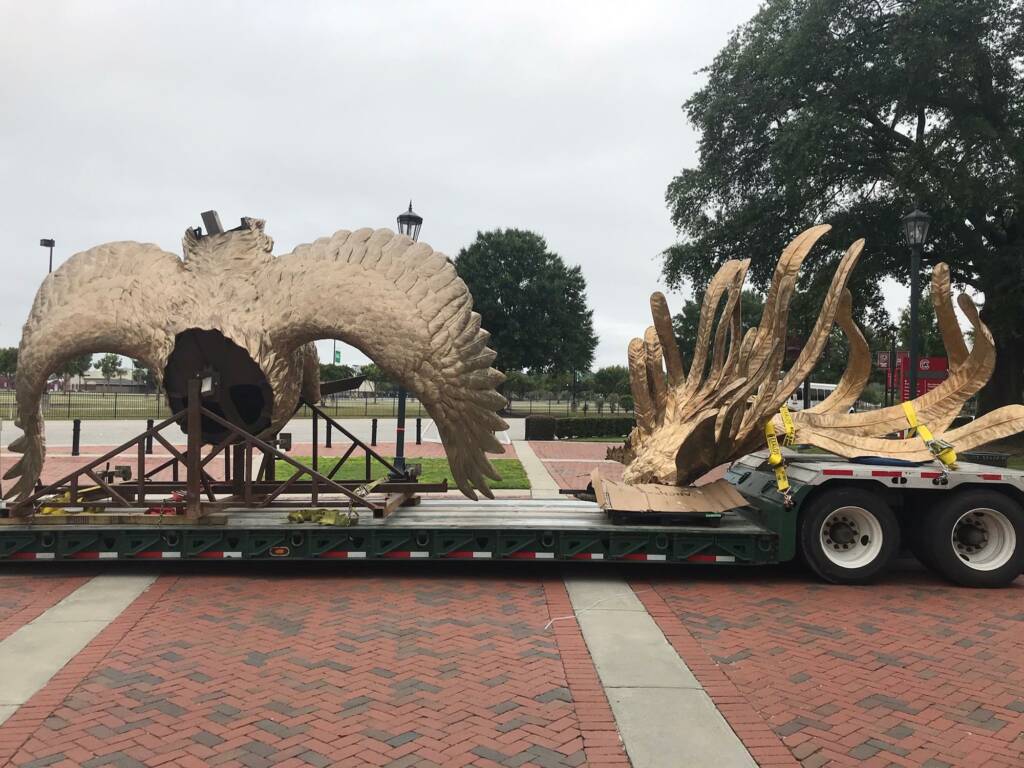
The idea for the sculpture was approved in September 2016 by the University’s Board of Trustees. Even though the donations for the project were made several years ago, there was a lot that had to be done before and a lot more afterwards to see the project through.
“We have a formal campus art policy that broadly defines expectations for artistic works and the process for selecting a sculptor,” Gruner said. “The work must be approved by the president and the senior vice president and eventually must go on to the Board of Trustees for final approval. The process to get a sculpture approved is thoughtful and inclusive. Sculptures on our campus are typically funded through gifted means; money that comes from donors. We don’t take tuition dollars and use them to create sculptures.”
Although the funding did come in through the donations, there were still many challenges in getting the project completed. A nationwide request for qualifications by interested sculptors was advertised and the North Carolina sculptor, Jon Hair, was selected based on his extensive experience with large bronze college mascot sculptures.
“We knew we wanted a Gamecock that somewhat resembled our logo, which meant it was going to have textured feathers, talons and wings that would extend broadly,” Gruner said. “We knew it would be difficult to execute. The sculptor, Jon Hair, came across as the most qualified because he has done numerous mascots at colleges throughout the country, and typically they are very large. He had the credibility and expertise to execute something of this magnitude.”
“What has made the Gamecock sculpture such a difficult project is the enormity of its size and the complexity of its form. Other college mascots are less animated and simpler to form as compared to a fighting Gamecock with long sinuous tail feathers and broad wings and talons. Inside the bronze is an elaborate steel structure that no one sees.”
Despite the long process, the final product will be worth the wait.
“We’re just pleased to be a part of everything that is being done around the stadium,” Horton said. “I plan to be there for the first game! We go to all the games that we can. It will be in thousands and thousands of photographs that Gamecock fans and other teams’ fans take in front of the stadium.”
“It will be very exciting. I know it took a little longer than anticipated, but I know it will be well-worth the wait. I know all of the fans will really enjoying seeing this Gamecock statue.”
“South Carolina Athletics is ready for a big period in time,” Seaton said. “This is not just a football team. This is Athletics. For decades to come, people are going to want to come and get their picture made in front of the Gamecock. Just knowing that people love our school and support our athletics program, that’s exciting to me.”
